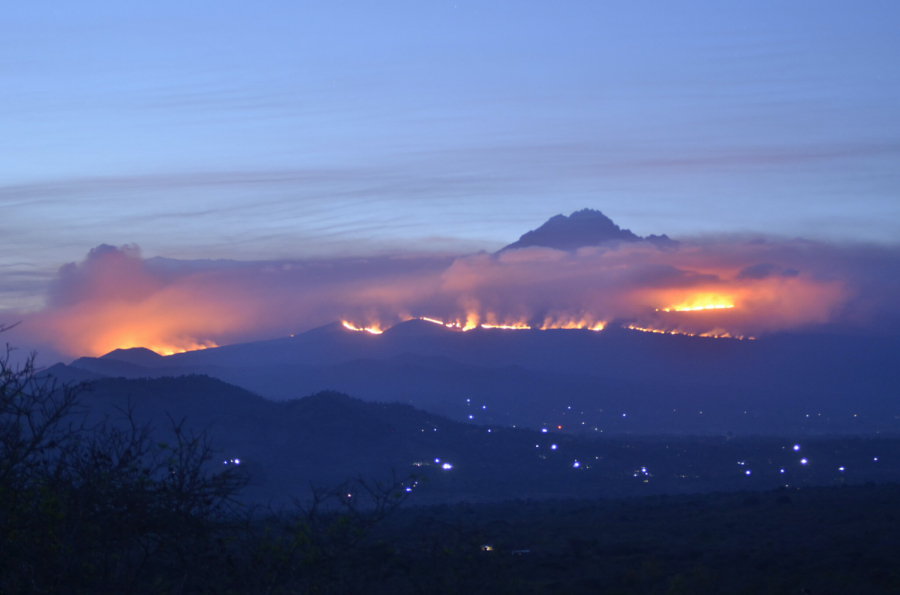What The Fires at Kilimanjaro Mean For Our Environment
Fires rage at Kilimanjaro on October 15th, 2020. Source: New York Times.
The highest point in all of Africa is Kilimanjaro, a snow capped mountain, a thrill seeker’s playground. Yet, at its feet, fires rage across forests and reduce trees to embers. The popular tourist destination, and a home to many endangered animals, is now burning away.
On October 15, 2020, porters warming food for visitors started the fire. There were no reported deaths or injuries, but this is not the first challenge that the mountain and its ecosystem has faced.
In recent years, Kilimanjaro has faced environmental problems such as water and air pollution, intrusion on the park’s perimeter, illegal logging, and poaching. Additionally, climate change threatens the mountain’s glaciers and icecaps. Climate change is a ubiquitous problem, and our generation must fix it.
The government of Tanzania deployed helicopters to help the firefighters, but the fire was massive, at about 11 square miles, according to DW News. Even the College of African Wildlife Management, located near the mountain, sent 264 staff and students to aid the firefighters. In total, there were five hundred volunteers fighting the fire, but the accelerating winds made it even harder for the firefighters to control the blaze.
Tanzania needs help. If they do not have sufficient resources to prevent and combat the fires, then the fires will escalate, which is terrible for the unique ecosystems and animals that live there.
The fires were distinguished on October 21st. In total, the fire had burned 95 km, or 5 percent of the vegetation around the mountain area. Hiking tours are slowly starting to resume on the mountain after it was evacuated, according to Explorers Web.
Luckily, there were no fatalities or injuries recorded, but the fire hurt many endangered species, especially mammals. The forest is home to black and white Colobus monkeys, who spend much of their time in trees, which are now absent due to the dry conditions from the fire.
The area will most likely catch fire again, and it is important that we help. Even with the current pandemic, there is always time to be kind, and we can help in small ways. Donating some money or raising money for supplies can help Tanzania maintain their beautiful ecosystems.
We should feel grateful that we live near forests with crisp colored leaves and rain. The chances of us having a fire are very slim, and luckily the majority of the animals in our area are not endangered. We have to make sure that we protect our wildlife and our nature. Not everyone gets to live in a rainbow of trees that soak in lots of rain because in some places those trees can be the thing that sets their home aflame.
We must do more to fight climate change because our future depends on it. Our environment is worsening by the second. All across the globe, we witness fires, floods, droughts caused by a change that we can fix. If we don’t do something in the next decade, we might reach a point of no return. The Earth has given us everything we love, hate, enjoy, and savor, so it is our time to help the Earth. It is our time to stand up.
If you want to learn more about how to protect our wildlife and forests, visit pawlids.com or www.nature.org.

Liron is a senior who is stoked to be working at the Banner again for her fourth year (second year as communications officer)! Outside of writing for the...


